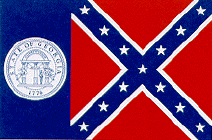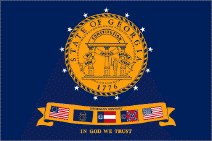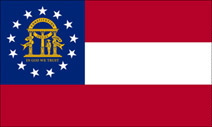6 June 1944… the start of the Anglosphere’s armed liberation of western Europe from National Socialism.


It never hurts to keep reminding some people of that.
|
|||||
|
Instapundit links to this UPI report:
One of the lesser lies now circulating about the Cold War, Communism and all that is that because it is now history, we should all forget about it. So, in an attempt to spread interest in this important issue by trivialising it, I have a question. Walter Duranty � Jimmy Duranty. What if any is the connection between these two persons? Jimmy Duranty was the bloke who sang that song that they used at the end of Sleepless in Seattle, right? And in one of my all time favourite movies ever, What’s Up, Doc?, Ryan O’Neal and Barbra Streisand sing a song called “You’re The Top” or some such thing, and during their version of this, reference is made to “The Great Duranty”. Walter, yes? Or is that Jimmy? If it’s Walter, it shows how the lie has reverberated down the decades, but is it? It’s not that I’m opposed to writing serious prose about murderous famines and about the scumbags in the West who concoct and print lies about how these murderous famines aren’t murderous famines at all and then spend another seventy years lying about all their earlier lies – merely that joking around is one of the ways you draw attention to such things.
I fear the debate over the cause of the Civil War will never be resolved. This is because there was no single cause. There was not even a predominant cause. The various participants in the war fought for a myriad of different reasons. On the Southern side, it is true that many advocates of secession argued that slavery was threatened if the South remained in the Union. This view was strongest in the Deep South (South Carolina, Georgia, Florida, Alabama, Mississippi, Louisiana, and Texas), were most of the slaves were located. But is must be remembered that there were two waves of secessions. The states of the Deep South seceded in the early months of 1861 and many of their articles of secession did claim slavery as a major issue. The Upper South (Virginia, North Carolina, Tennessee, and Arkansas) did not secede until after Lincoln called for a levy of state militias to put down the “rebellion”. It was their view that the Federal government was abusing the sovereign rights of the seceding states that drove the Upper South out of the Union. In fact, prior to Ft. Sumter, Virginia voted against secession. Also, both Robert E. Lee and “Stonewall” Jackson, two Virginians who were unarguably the Confederacy’s two best generals, viewed slavery as an abomination and wouldn’t have taken up arms simply to fight for slavery. They were fighting to defend their home and hearth from what they viewed as a foreign invasion. Even this dichotomy between the motivations of the Deep South and Upper South over simplifies the issue. The South also had other grievances against the North, particularly over the tariff. The Republican Party, representing the manufacturing interests of the North-Eastern States, was highly protectionist at that time. Lincoln had written quite extensively on the benefits of high tariffs. The South, with few manufacturers, generally supported free trade. → Continue reading: The Civil War rumbles on Once upon a time, there was a group of states within a larger nation who did something terrible…they allowed slavery. Eventually there was a dreadful civil war between those states and some other states who did not approve of slavery. Although the war was only incidentally about slavery and rather more about centralised versus decentralised power, it did at least have the happy effects of ending slavery. 
The National Flag of The Bad Guys: The Stars and Bars! 
The flag which The Bad Guys flew in battles How do we know they were ‘The Bad Guys’? Because of slavery, of course, but mostly we know this because they lost and the winners get to write the history books. So much later, after the war was over, one state used a flag which harked back to the old battle flag. They argued that most of the people who fought in that war from their state were just fighting for hearth and home and very few of them actually owned slaves anyway. Regardless, those days were part of their history and they rather liked their old flags. 
Oh no…Echos of The Bad Guys! This upset some people mightily and they threatened economic boycotts and all manner of other nastiness if the state did not change their flag to remove the symbolism of The Bad Guys of Old. So the governor said people could vote on this, but then decided that no, actually, they couldn’t, or maybe they could… but in the mean time, here is a splendid new flag and will you leave me alone now? 
The Flag Spangled Banner? So folks stopped for a moment, looked at this new flag and agreed that it was just about the dumbest, ugliest dish-rag to flap over the state capitol ever. “Screw that!” they all cried, and so the arguments continued to rage. Eventually however, they agreed to another splendid brand new flag and everyone was happy because this new flag does not look anything like the flag used by The Bad Guys of Old, right? 
The State Flag of the Good Guys: The…er, um, ah…Stars and Bars Those Americans… who says they have no concept of ironic humour? You just gotta love ’em. On May 4, 1626 American Indians agreed to sell Manhattan island to European settlers for $24 in cloth & buttons. As with most free market transactions, all parties involved were satisfied with the deal: the settlers got land to homestead, the Indians received exotic manufactured goods that were beyond their ability to produce. This is the first posting in what may or may not turn into a series on the general theme of the historic impact of the ever changing and evolving technology of communication, thoughts provoked by the talk that Michael Jennings gave at my home on the evening of Friday April 25th. One of my fondest memories is of an earlier talk given by Sean Gabb in this same ongoing last-friday-of-the-month series, about the impact of the printing press. He described this not in the usual way, by telling the story of the printing press itself, and how it spread, and what it caused, but by describing how things were done before printing existed. He described how documents were copied before there were any printing presses to copy them, the central point being that such documents only lasted so long and it was all that the copyists could do to keep existing texts in continued existence. In such a world it was very hard for knowledge to grow. On the contrary, the only thing it could really do was shrink, which does a lot to explain why the Golden Age in those days tended to be placed in the past, rather than in the future as we now tend to prefer. But another way to look at the arrival of printing is to look at it not just as a means of data storage, but also as a means of data transmission. Consider. With any means of communication there are basically two problems to solve. First, you have to concoct the message in the first place. Second, you have to transmit it. Now, look at printing from these two points of view. Clearly, it does wondrous things to the first process, but equally clearly, a little compression aside, it contributes almost nothing to the second. Getting a book from Antwerp to Rome still depends on the speed of a donkey, just as it always did. This simple fact had huge consequences for the way that printing impacted upon the wider culture. → Continue reading: How printing caused nationalism Last night the British television channel, Channel 4, gave us another superb documentary history programme with a great twist – the story of the Dambuster raid on the German dams in WW2. It relayed the story of how Wing Cmdr Guy Gibson (a mere 24 years old) led a squadron of Avro Lancasters to smash two dams using the famous “bouncing bomb”. The programme makers got a group of present-day serving RAF aircrew, including two women, who work in the very different airforce of today, to try to repeat the feat of Guy Gibson’s men, using a flight simulator and a real-live Lancaster. These modern flyers are used to state-of-the-art navigation technology rather than the old pencil, map and compass techniques that had to be used back in the 1940s, when radar-based techniques were in their relative infancy. It made for compulsive viewing. And one thought stuck in my head. Most of the flyers are about on average 10 years younger than me (I am 36). Gibson, as noted above, was just 24. I don’t think – as the Iraq campaign demonstrates – that the best of our young folk today are any less capable of performing heroic and dangerous feats than our forbears. And while I would prefer to see such talents used for peaceful purposes like entrepreneurship rather than flying a bomber, I think recent events bode rather well for our future. That’s something to remember when London gets infested with the usual rag-bag of anti-globalistas and Saddam mourners on May 1.
Having flicked through a digest of British politician’s speeches about the war, and looking at just the contributions from some members of the Labour Party, four themes seem to stand out.
Iraq in 2003? No, the Falkland Islands in 1982. For reasons that I won’t bore anyone with, earlier today I was puttering around the Latin American section of the University of London’s library at Senate House. My eyes fell on a dusty tome entitled “The Falkland’s Campaign: A Digest of Debates in the House of Commons, 2 April to 15 June 1982” published by HMSO, London. By a remarkable coincidence, the book fell open at a speech by none other than that master of decisiveness, Robin Cook. Randomly dipping further into the book, it was eerie to read the ‘usual suspects’ such as Cook and Tony Benn making the same speeches then as they’ve been doing two decades later. It’s as if they’ve had their secretaries scan in their old speeches from Hansard, convert them into Microsoft Word documents, and then use Word’s find and replace facility to swap ‘Argentina’ and ‘Iraq’. There was even dear old Tam Dalyell using the words ‘South Atlantic’, ‘mire’, and ‘Vietnam’ in one speech! Britain’s Channel 4, whilst known to have more than its fair share of nit-wit journalists, does nonetheless turn out some splendid documentary programmes. The best of the current crop being a series called ‘Secrets of the Dead’ which attempts to explore the science behind great disasters of the past. This past week (and I cannot help wondering if the scheduling was more than coincidental) they devoted themselves to the great Spanish Flu outbreak of 1918/19 that swept right around the globe and claimed some 20 millions lives. Or at least, that is the death toll that I believed was generally accepted but, according to this documentary, the real toll was between 50 million and 100 million! If that is so then surely it must rate as the single most lethal pandemic in history? Not to mention that fact that, coming hot on the heels of World War I, it has to be the biggest ever kick in the head. But here is the rub, because according to the senior virologist advising the documentary makers, there is some convincing evidence that the troop concentrations of World War I is what led to the outbreak:
Mr. Oxford also adds,
Blimey! The only thing missing from that is the spooky background music. Still, TV producers do like to spice up their dry-as-dust science programmes with a bit of melodrama and, let’s face it, general doom-mongering has probably overtaken fly-fishing as a favourite recreational activity. But I would more prepared to let this slide into great public melee of cried havoc were it not for the persistant, and increasingly troubling reports, of SARS:
Of course, SARS (the technical name for which is ‘shitscarey-itis’) appears to be a virulent form of influenza or pneumonia and we’ve got very large troop concentrations indeed in Iraq and the surrounding vicinity. Who was it that said that history doesn’t repeat itself but it does rhyme? Now I am not about to get all wild-eyed and apocalyptic on you. In fact, as soon as I have finished posting this I am going to go to bed and sleep like a baby. Also, and let me be quite emphatic about this for the benefit of the ‘quagmire’ lovers out there, there is no comparison whatsoever between the current hostilities in Iraq and World War I and I do believe that SARS has, in fact, been knocking around South-East Asia for quite a few months but we’ve only recently got to hear about it. But, crystal-clear distinctions aside, nobody is going to tell me that there isn’t just a hint of eerie resonance here. The Western Roman Emperor Valentinian I (364-375 AD) refused to intervene in theological controversies “It is not right for me, a layman, to meddle in such things. Let the bishops whose business it is meet by themselves wherever they like”. Valentinian tolerated all sects of Christian (bar the Manichees) and even allowed the traditional pagan rituals to take place in the Senate House in Rome – the alter of Victory remained in place, and the Vestal Virgins and the other ancient Roman priesthoods continued. Valentinian was not a half hearted Christian – he had been an open Christian during the time of the pagan Emperor Julian (when being a Christian was not exactly a good strategy for promotion). Nor was Valentinian a kindly man – for example he had men who tried to dodge conscription burned alive. It was simply that religious toleration was a perfectly respectable point of view for a Christian in Valentinian’s time. The other point of view (that at least non Christians should be persecuted) was widely held also – for example by the powerful Ambrose, Bishop of Milan. Valentinian’s own brother (the Emperor of the East – Valens) persecuted Christians that held to a different point of view to himself (as Valens was an Arian this meant persecuting people who held what later became the mainstream point of view). But the matter was not clear cut – one could be a Christian in good standing and not support persecution. → Continue reading: Augustine The second instalment, from the same source, of historical events relevant to current affairs, as it often seems with history. This is due to the comments on the previous posting about slave trade by Muslim corsairs, correctly identifying who took them on.
Could we, please, have the history repeat itself again now?! |
|||||

All content on this website (including text, photographs, audio files, and any other original works), unless otherwise noted, is licensed under a Creative Commons License. |
|||||